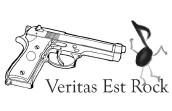
Jimmy LaValle has long been recognized by indie musicians as one of the first to arise from the emo fallout with a clear idea of the kind of subdued ambient sounds that so many bands have latched onto since.
Better known by his moniker The Album Leaf, LaValle has seldom strayed from his steady grooves, understated guitar lines and his delicately ringing Rhodes. His humble consistency has made him a comfortable staple in the rock scene and a perfect soundtrack for a late night car ride or some other vaguely pensive moment.
While The Album Leaf has never shocked the masses or received much critical buzz for his otherwise simplistic approach to music, he has earned the respect of many musicians along the way. Having collaborated with bands such as Tristeza, The Black Heart Procession and Sigur R¢s, Lavalle has proven himself to be a well-respected presence in the current musical landscape.
After an 18-month tour supporting his 2004 release “In a Safe Place,” The Album Leaf retreated back into his house in San Diego for the next six months to record his new record “Into the Blue Again,” just released on Sub-Pop Records.
The album is definitely a noticeable step forward from “Safe Place,” yet it still has LaValle’s distinct sound permeating throughout. The subtle addition of more acoustic instruments on top of the electronic drones gives the songs a clearer sense of purpose in a lot of ways.
Where listening to ambient drones coming from sequencers and delay-soaked guitars can lose its luster as the songs seem to melt into musical soup, “Into the Blue Again” shows a keener attention to contrast within its developing soundscapes.
While The Album Leaf still requires a kind of panoramic listening, the recording on this new record allows the arrangements to come through more clearly. Where “In a Safe Place” often felt a bit too droney, the subtle mix of acoustic and electronic percussion on this record gives the different instruments a richer sense of purpose than in his previous releases.
Though LaValle’s vocals have never been particularly gripping, they seem to have found a more comfortable niche in the few non-instrumental tracks. With the use of some clever overdubbing, LaValle’s lackadaisical voice is delicately set against the rest of the music providing a more comfortable contrast.
Nonetheless, being such a strong instrumental composer it always seems a bit uninvited when you suddenly hear a raspy male voice emerge from the otherwise serene arrangements. Still, if you share my opinion there are only three tracks which fall into this pitfall and as far as I’m concerned the rest of the album more than makes up for any such artistic oversights.
